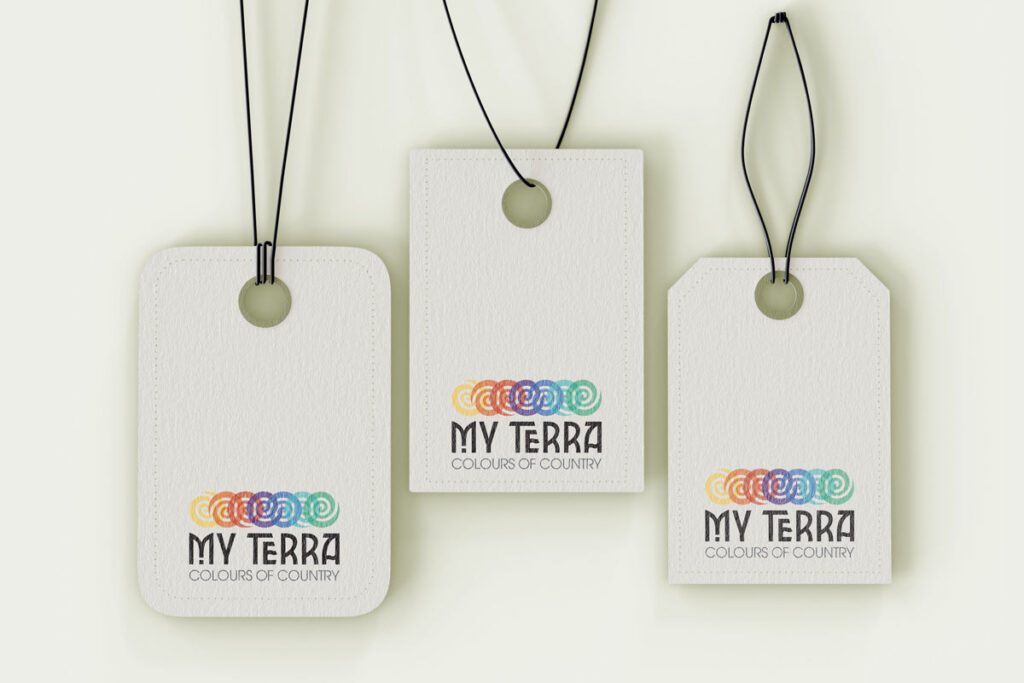In today’s competitive market, packaging is more than just a means to protect a product; it’s a powerful tool for branding and attracting consumers. For small businesses, effective packaging design can make a significant difference in product visibility, customer engagement, and ultimately, sales. In this blog post, I will outline the essential steps involved in designing packaging for a small business venture.
1. Understand Your Brand Identity and Target Audience
The first and foremost step in designing packaging for your small business is to understand your brand identity and target audience. Your packaging should reflect your brand’s values, personality, and the message you want to convey. Conduct market research to identify your target audience’s preferences, needs, and purchasing behaviors. Align your packaging design to resonate with this audience like I have for my small business venure, “My Terra”.
2. Set Clear Objectives for the Packaging Design
Establish clear objectives for your packaging design. These objectives should align with your brand’s goals, such as increasing brand awareness, enhancing product visibility, promoting sustainability, or communicating product features. Having defined objectives will guide your design choices throughout the process. I wanted my design packaging to have a natural feel to stay true to the “My Terra” idea of from country.
3. Create or work to a Design Brief
Develop a comprehensive design brief that outlines all the essential elements of your packaging design project. This should include your brand’s vision, target audience, key messaging, brand colors, preferred packaging materials, budget constraints, and any specific design guidelines or preferences. Images below are from the My Terra design brief.
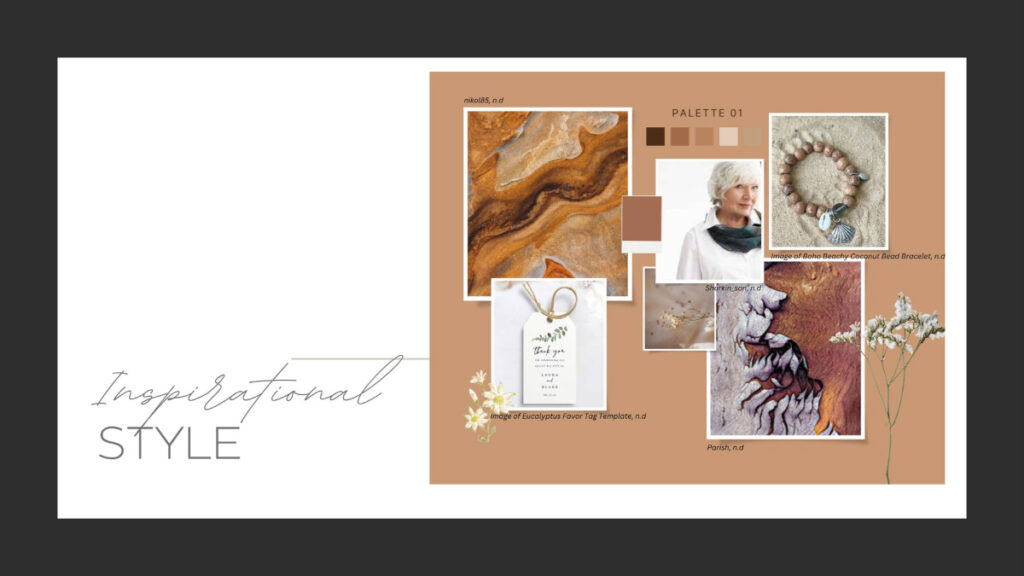
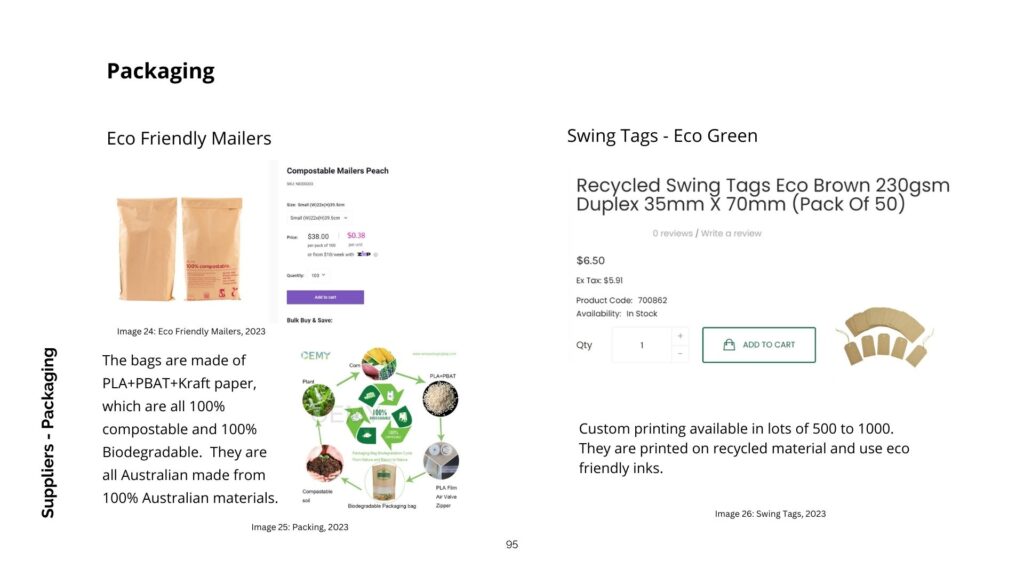
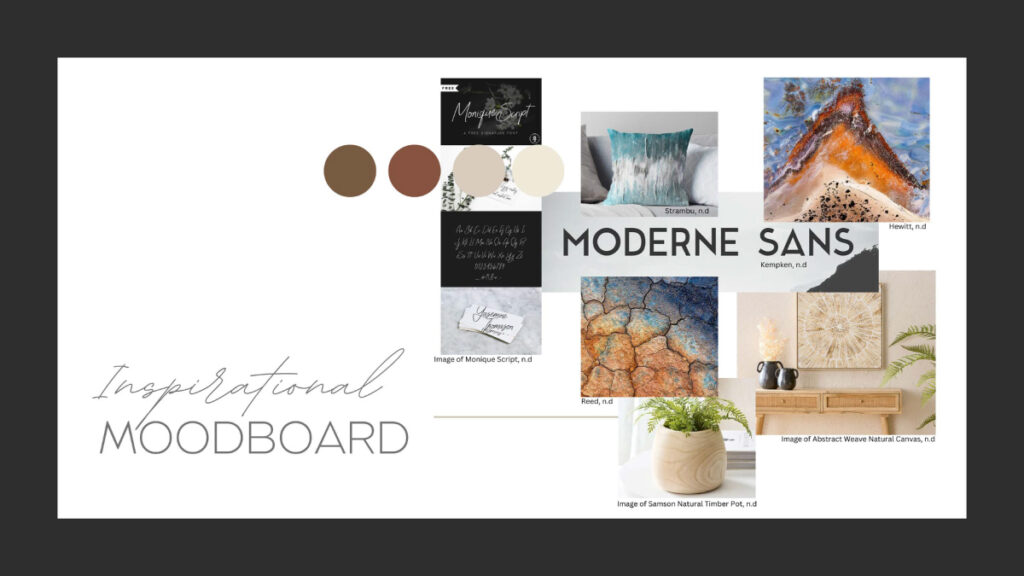
4. Collaborate with Other Designers.
Consider working with experienced design professionals or agencies who specialise in packaging design. They can bring valuable expertise and creativity to the table, ensuring that your packaging design is visually appealing, on-brand, and functional. This was not an option for me but certainly worth persuing and needed to me mentioned here.
5. Concept Development and Prototyping
Come up with multiple design concepts based on the design brief. These concepts should incorporate various visual elements, typography, color schemes, and materials. Once the concepts are developed, create prototypes or mockups to visualise how the design will appear on the actual packaging. Images below showing why mock-ups are so important.
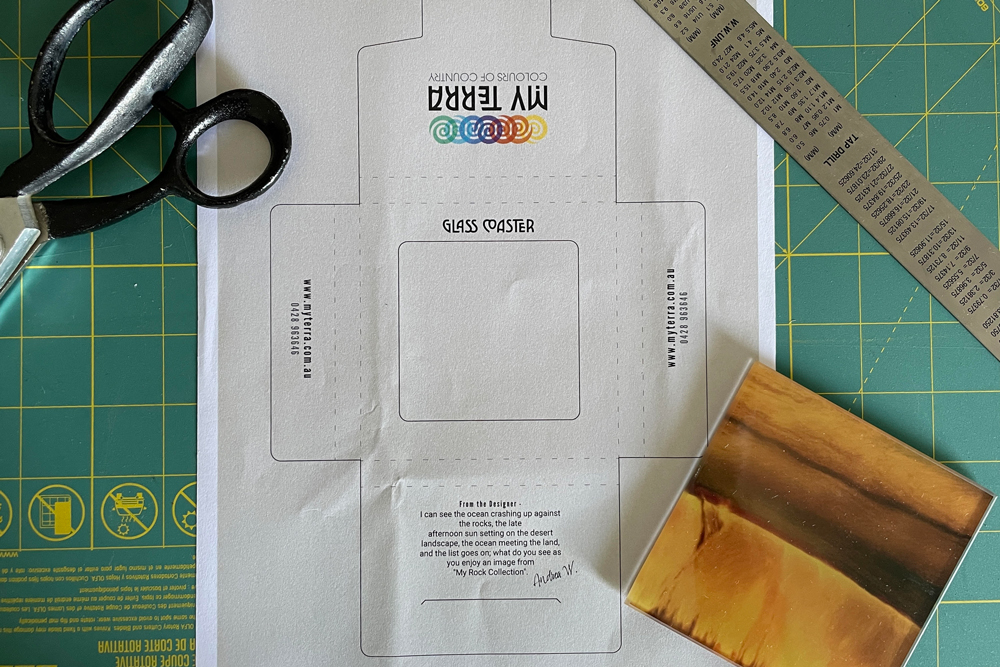
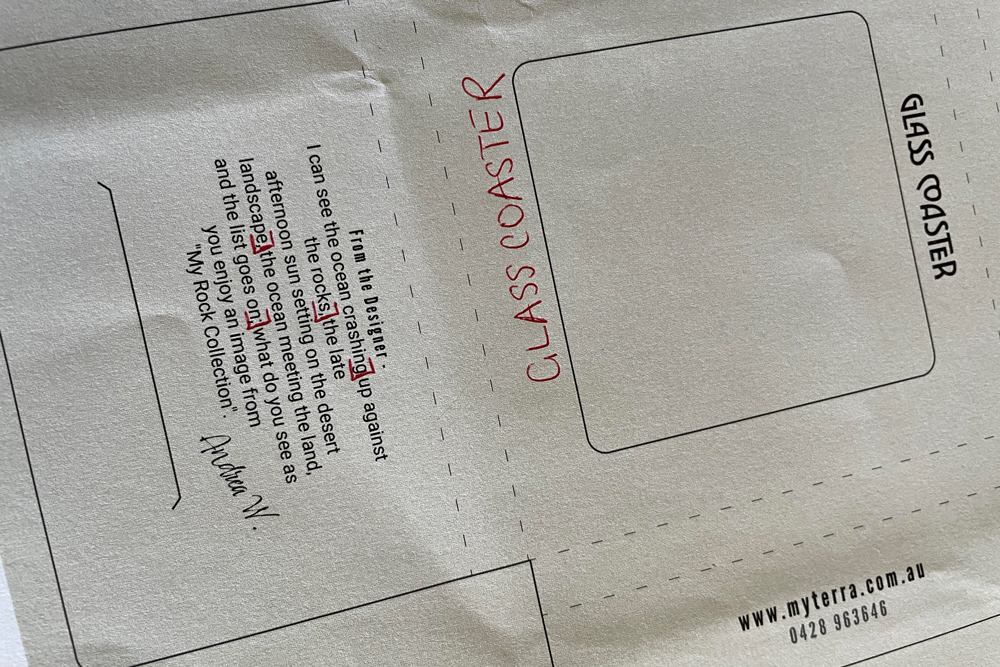
6. Gather Feedback and Reiterate
Share the design concepts and prototypes with stakeholders, including your peers, potential customers, and industry experts. Collect feedback on the design’s appeal, readability, usability, and overall alignment with your brand. Use this feedback to make necessary changes and refine the design.
7. Finalise the Design and Prepare for Production
Once you have refined the design based on feedback and made necessary adjustments, finalise the design for production. Ensure that the design meets the required specifications for printing and adheres to any regulatory or compliance standards related to packaging. Images below with and without printer marks.
8. Print and Produce
Work with printing and production partners to bring your packaging design to life. Ensure that the final product matches the approved design, colors, and specifications. Quality control is crucial at this stage to maintain consistency and excellence in your packaging.
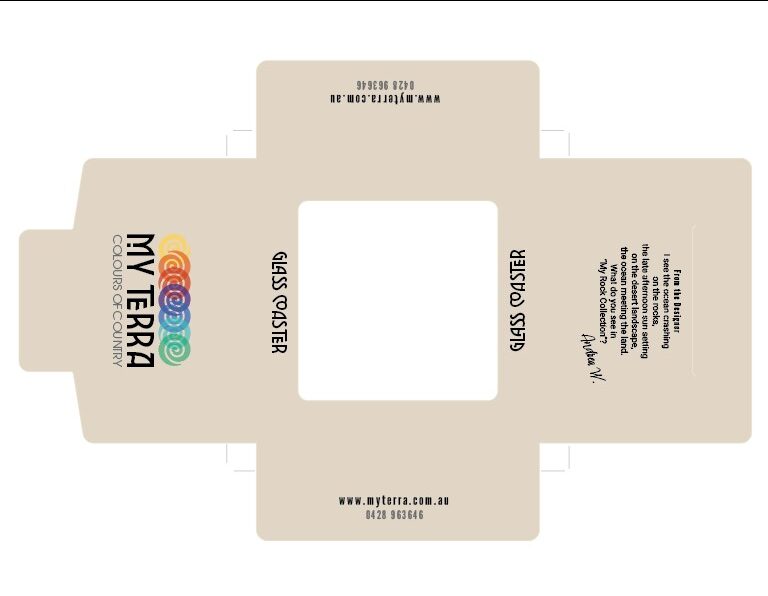
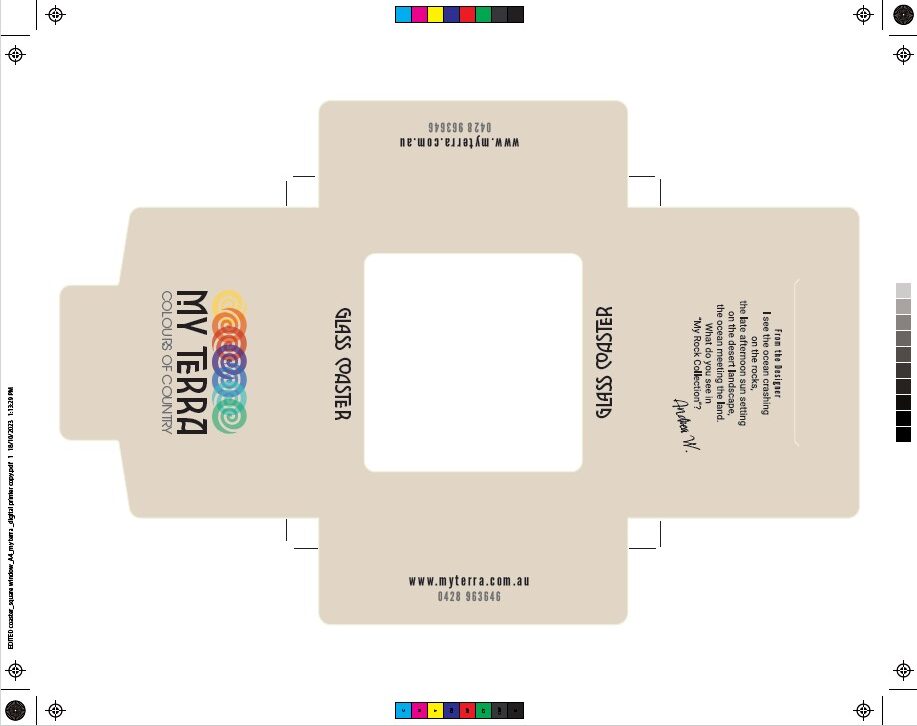
9. Launch and Monitor Performance
Introduce your newly designed packaging to the market and monitor its performance closely. Analyse consumer reactions, sales data, and feedback to evaluate the success of your packaging design. Use this data to make informed decisions for future packaging updates or improvements.
In conclusion effective packaging design can significantly impact a small business’s success in a crowded marketplace. By following these steps and investing in a thoughtful and appealing packaging design, your small business can enhance brand recognition, attract customers, and drive sales. I especially love the end feel of your product being complete.
PROFESSIONAL EXPERIENCE
My journey through the world of packaging design for “My Terra” has been a rewarding and educational experience. Throughout this process, I had the opportunity to take my initial concept and transform it into a tangible reality. I began by digitally printing prototypes. A step that allowed me to fine-tune and refine the packaging design multiple times, ensuring that it perfectly summed up the essence of my brand.
But it didn’t stop there. I was personally involved in every aspect of this packaging project, from desiging, printing and cutting the prototypes myself using a self-healing mat and a precision knife to experimenting with different strings and fastening options until I achieved the desired look and functionality.
The culmination of this large-scale effort was the creation of the final packaging prototype. There’s nothing quite like the sense of satisfaction that comes from holding a completed packaging prototype in your hands, especially when it encapsulates your product perfectly. For me, the moment I held my glass coaster packaging prototype was truly remarkable; it represented the fusion of creativity and craftsmanship, a testament to the dedication and hard work that went into this project.
It’s not just a package; it’s a representation of the care and thought that went into every detail of “My Terra.” This experience has deepened my appreciation for the art of packaging design and its pivotal role in brand representation. I look forward to using this experience as a foundation for creating even more exceptional packaging solutions in the future.
